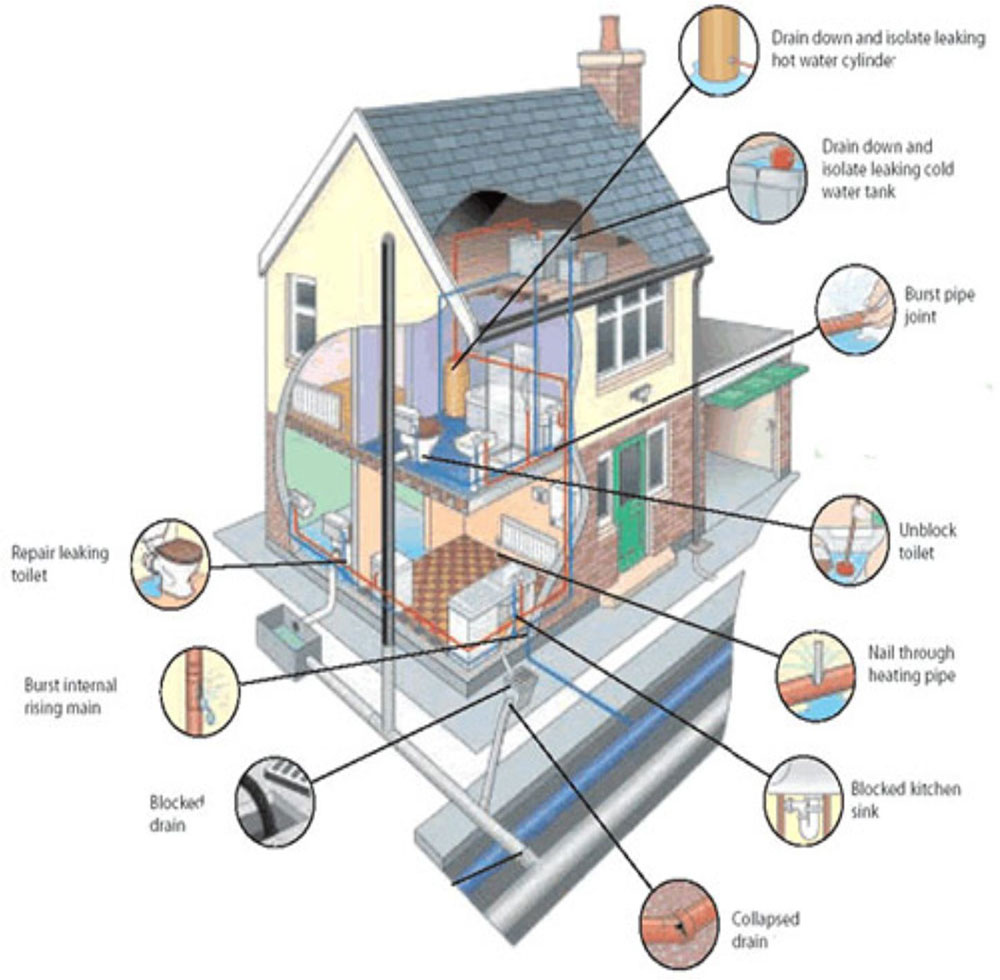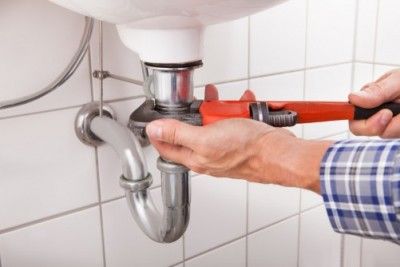Essential Parts of Your House's Plumbing System
Essential Parts of Your House's Plumbing System
Blog Article
We have uncovered this article pertaining to Understanding Your Home's Plumbing Anatomy below on the internet and think it made perfect sense to share it with you on this site.

Understanding just how your home's pipes system functions is necessary for every home owner. From delivering clean water for drinking, cooking, and bathing to securely removing wastewater, a well-kept plumbing system is vital for your family members's health and wellness and convenience. In this thorough overview, we'll explore the intricate network that composes your home's plumbing and offer tips on maintenance, upgrades, and dealing with typical problems.
Introduction
Your home's pipes system is more than just a network of pipelines; it's a complex system that guarantees you have accessibility to clean water and efficient wastewater removal. Recognizing its elements and just how they work together can assist you avoid costly fixings and make sure whatever runs smoothly.
Fundamental Parts of a Plumbing System
Pipes and Tubing
At the heart of your plumbing system are the pipelines and tubing that bring water throughout your home. These can be made of numerous materials such as copper, PVC, or PEX, each with its benefits in regards to sturdiness and cost-effectiveness.
Components: Sinks, Toilets, Showers, etc.
Components like sinks, toilets, showers, and bath tubs are where water is used in your house. Comprehending how these fixtures attach to the pipes system assists in detecting troubles and intending upgrades.
Valves and Shut-off Factors
Shutoffs manage the flow of water in your plumbing system. Shut-off valves are essential during emergencies or when you require to make fixings, enabling you to isolate parts of the system without interrupting water circulation to the whole residence.
Water Supply System
Main Water Line
The main water line links your home to the local water system or an exclusive well. It's where water enters your home and is dispersed to numerous components.
Water Meter and Stress Regulatory Authority
The water meter measures your water use, while a stress regulator makes sure that water flows at a risk-free stress throughout your home's pipes system, preventing damage to pipelines and components.
Cold Water vs. Hot Water Lines
Understanding the distinction in between cold water lines, which supply water directly from the primary, and warm water lines, which bring warmed water from the water heater, helps in repairing and planning for upgrades.
Drain System
Drain Pipes Pipeline and Traps
Drain pipelines carry wastewater far from sinks, showers, and commodes to the drain or sewage-disposal tank. Catches protect against sewer gases from entering your home and likewise catch debris that could cause clogs.
Ventilation Pipes
Air flow pipelines enable air right into the water drainage system, preventing suction that can reduce drain and trigger catches to vacant. Correct air flow is crucial for keeping the integrity of your plumbing system.
Importance of Proper Drainage
Ensuring proper drainage protects against back-ups and water damage. Routinely cleansing drains pipes and preserving traps can avoid costly fixings and prolong the life of your plumbing system.
Water Heating Unit
Kinds Of Water Heaters
Water heaters can be tankless or traditional tank-style. Tankless heaters heat water on demand, while tanks store warmed water for prompt usage.
Exactly How Water Heaters Connect to the Plumbing System
Recognizing just how hot water heater link to both the cold water supply and hot water circulation lines assists in identifying issues like inadequate hot water or leakages.
Upkeep Tips for Water Heaters
On a regular basis flushing your water heater to get rid of debris, inspecting the temperature setups, and checking for leaks can expand its life-span and enhance energy effectiveness.
Common Pipes Concerns
Leaks and Their Causes
Leakages can happen due to maturing pipes, loose installations, or high water pressure. Resolving leaks without delay stops water damages and mold development.
Blockages and Blockages
Obstructions in drains and toilets are commonly triggered by flushing non-flushable products or a buildup of oil and hair. Using drainpipe screens and bearing in mind what decreases your drains can stop clogs.
Signs of Plumbing Troubles to Expect
Low water pressure, slow-moving drains, foul odors, or unusually high water expenses are indications of possible pipes problems that should be dealt with immediately.
Pipes Maintenance Tips
Regular Assessments and Checks
Arrange yearly pipes inspections to catch problems early. Seek signs of leakages, deterioration, or mineral accumulation in faucets and showerheads.
Do It Yourself Maintenance Tasks
Basic jobs like cleaning faucet aerators, looking for toilet leakages making use of dye tablet computers, or shielding revealed pipes in chilly environments can protect against significant plumbing problems.
When to Call a Specialist Plumbing
Know when a pipes concern requires expert experience. Trying complex repair work without proper understanding can lead to even more damages and greater repair work expenses.
Upgrading Your Plumbing System
Reasons for Upgrading
Updating to water-efficient components or replacing old pipes can improve water quality, minimize water costs, and enhance the worth of your home.
Modern Pipes Technologies and Their Advantages
Discover technologies like smart leak detectors, water-saving bathrooms, and energy-efficient hot water heater that can save money and decrease environmental effect.
Cost Factors To Consider and ROI
Compute the upfront expenses versus lasting savings when considering plumbing upgrades. Several upgrades pay for themselves with minimized energy bills and fewer repair services.
Ecological Influence and Conservation
Water-Saving Components and Devices
Installing low-flow faucets, showerheads, and bathrooms can dramatically reduce water usage without compromising efficiency.
Tips for Lowering Water Usage
Easy routines like dealing with leakages without delay, taking much shorter showers, and running full tons of washing and recipes can preserve water and lower your utility bills.
Eco-Friendly Plumbing Options
Think about lasting pipes products like bamboo for floor covering, which is durable and eco-friendly, or recycled glass for countertops.
Emergency Preparedness
Actions to Take Throughout a Pipes Emergency situation
Know where your shut-off shutoffs lie and just how to switch off the water in case of a ruptured pipeline or significant leakage.
Importance of Having Emergency Situation Contacts Helpful
Keep contact information for local plumbings or emergency services readily available for fast feedback throughout a pipes situation.
Do It Yourself Emergency Situation Fixes (When Applicable).
Temporary repairs like utilizing duct tape to patch a leaking pipeline or positioning a pail under a leaking faucet can reduce damage until a specialist plumbing technician shows up.
Conclusion.
Comprehending the makeup of your home's pipes system equips you to maintain it effectively, conserving time and money on repairs. By following normal upkeep routines and remaining informed concerning modern pipes modern technologies, you can ensure your plumbing system runs efficiently for many years ahead.
HOW YOUR PLUMBING SYSTEM WORKS
Which Pipes Do What?
Blue lines = fresh water supply entering the building
Red lines = hot water supply entering the building
Grey lines = pipes carrying waste away from the building and venting pipes carrying gases away from the building (through the roof)
YOUR MAIN PLUMBING SYSTEMS
There are two main plumbing systems that support your home s basic plumbing needs one that brings clean water into your home, and one that sends dirty water away from your home. Connected to the toilet, bath, shower, and other faucets in your home, these two systems keep your water flowing in the right directions.
ACCESSING FRESH WATER
Fresh and clean water is brought into your home through the main water supply line . Filtered through one pipe, this water is pressured to flow into the various fixtures in your home at any given time.
This water can be sourced from a well located on your property, a pond or river (mostly cottages), or, as in most cases, from the city s municipal water treatment centre. However, it is important to note that water that is untreated, such as the water siphoned from ponds or rivers, may not be safe to drink. Personal water supplies always need to be treated for hardness and contaminants before consumed.
MUNICIPAL WATER SUPPLIES
Improve taste and odour
Remove sediment
Eliminate hardness
Reduce chlorine
COLD WATER SUPPLY VS. HOT WATER SUPPLY
Cold water flows into your home or building through the service line, which then distributes hot or cold water to your fixtures. This line is most commonly run through a central column that runs floor to floor. Hot water runs in short and straight pipes as the longer the pipeline, the more heat that will be lost in the transfer. Having shorter pipes also allows residents to access hot water more quickly.
WASTE WATER SYSTEM
Your wastewater system is divided into two parts pipes that send wastewater away from your home and venting pipes that send sewer gas away from your home. Sewage water travels through pipes that flush the water and waste towards local sewers that are operated and managed by your city or town. Most sewer systems rely on gravity to move the wastewater to where it needs to go.
The further away from your toilet or sink, the larger wastewater pipes become. This allows for waste to be disposed of from various parts of your home or business at once without pipe blockages. The angle and flow of these pipes are also essential for keeping your waste pipes clear of build up.
https://harrisplumbing.ca/how-your-home-plumbing-system-works/

HOW YOUR PLUMBING SYSTEM WORKS
Which Pipes Do What?
YOUR MAIN PLUMBING SYSTEMS
There are two main plumbing systems that support your home s basic plumbing needs one that brings clean water into your home, and one that sends dirty water away from your home. Connected to the toilet, bath, shower, and other faucets in your home, these two systems keep your water flowing in the right directions.
ACCESSING FRESH WATER
Fresh and clean water is brought into your home through the main water supply line . Filtered through one pipe, this water is pressured to flow into the various fixtures in your home at any given time.
This water can be sourced from a well located on your property, a pond or river (mostly cottages), or, as in most cases, from the city s municipal water treatment centre. However, it is important to note that water that is untreated, such as the water siphoned from ponds or rivers, may not be safe to drink. Personal water supplies always need to be treated for hardness and contaminants before consumed.
MUNICIPAL WATER SUPPLIES
COLD WATER SUPPLY VS. HOT WATER SUPPLY
Cold water flows into your home or building through the service line, which then distributes hot or cold water to your fixtures. This line is most commonly run through a central column that runs floor to floor. Hot water runs in short and straight pipes as the longer the pipeline, the more heat that will be lost in the transfer. Having shorter pipes also allows residents to access hot water more quickly.
WASTE WATER SYSTEM
Your wastewater system is divided into two parts pipes that send wastewater away from your home and venting pipes that send sewer gas away from your home. Sewage water travels through pipes that flush the water and waste towards local sewers that are operated and managed by your city or town. Most sewer systems rely on gravity to move the wastewater to where it needs to go.
The further away from your toilet or sink, the larger wastewater pipes become. This allows for waste to be disposed of from various parts of your home or business at once without pipe blockages. The angle and flow of these pipes are also essential for keeping your waste pipes clear of build up.
https://harrisplumbing.ca/how-your-home-plumbing-system-works/
Do you really like reading about Understanding Your Home's Plumbing Anatomy? Give a comment below. We'd be happy to listen to your responses about this write-up. We hope that you come back again in the near future. Appreciated our posting? Please share it. Help another person check it out. We treasure reading our article about Understanding Your Home's Plumbing Anatomy.
Click Here Report this page